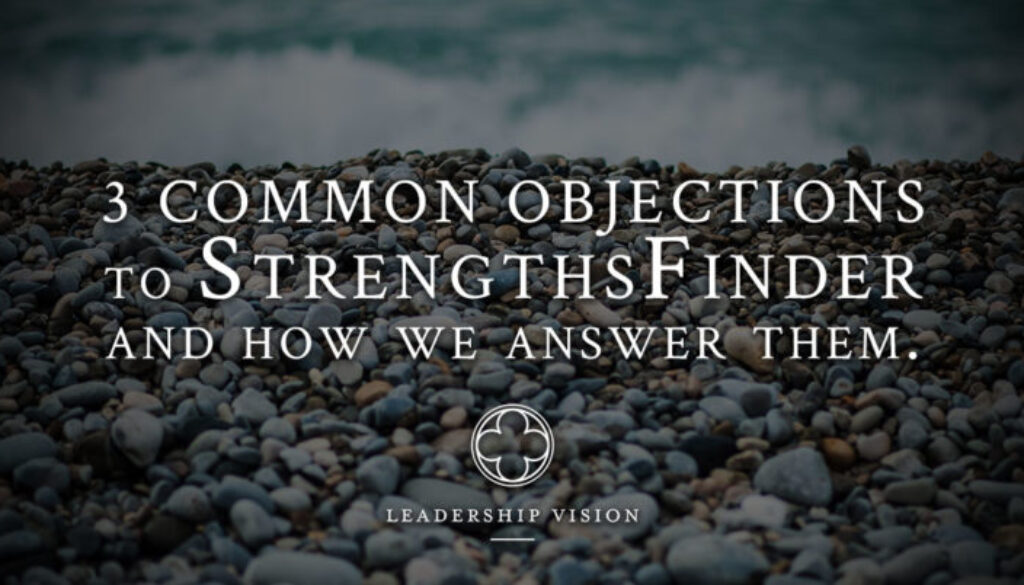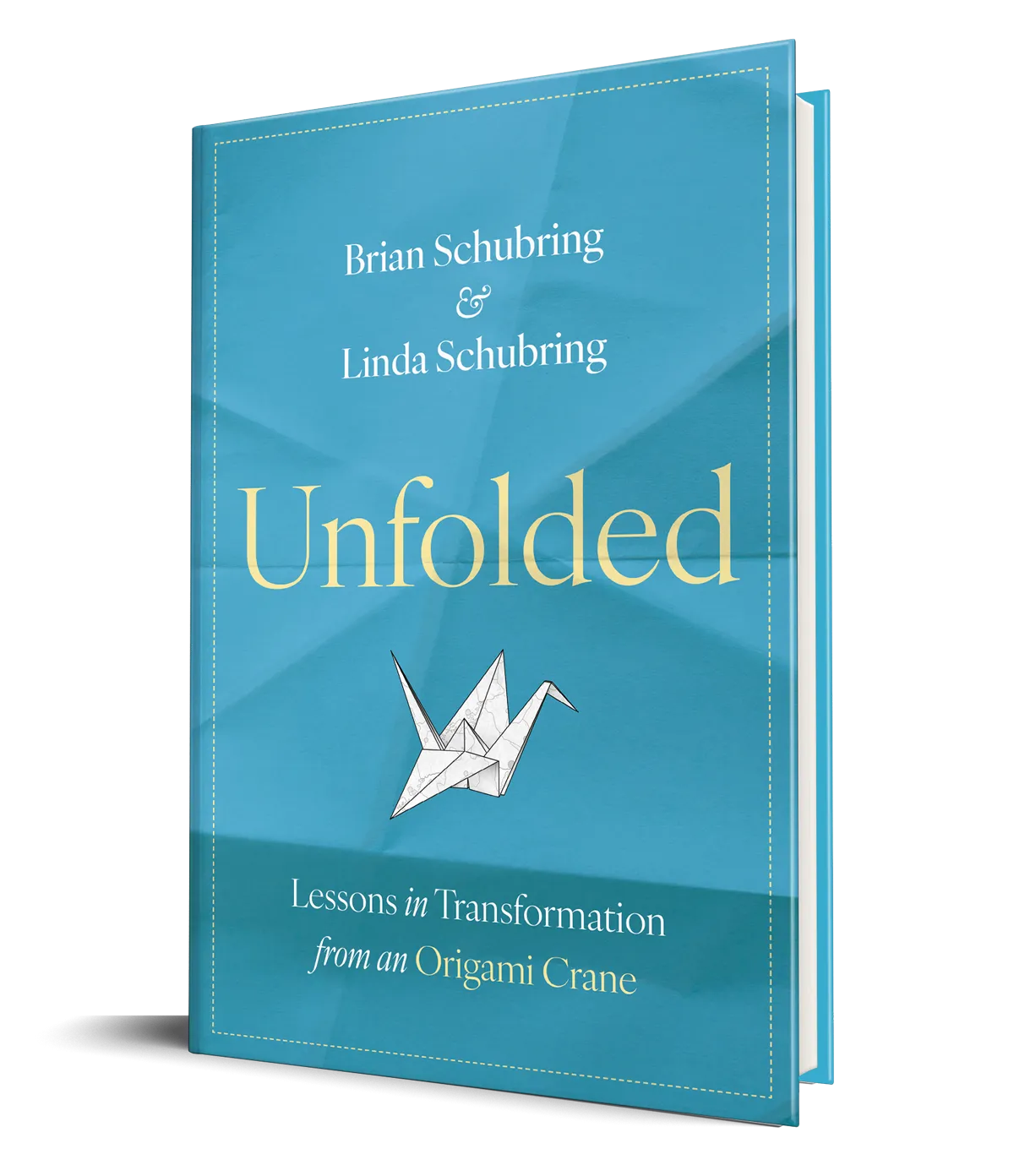3 Common Objections to StrengthsFinder™
One of my roles at Leadership Vision is to tell as many people as possible about the benefits of knowing and living into your Strengths. My Communication, WOO, and Responsibility Themes are very energized by this role because I have personally and professionally been impacted by this work.
Sometimes, as I enter into conversations with people about Strengths and StrengthsFinder™, I find they either love it, or have a strong skepticism towards it. This is a result of simply not understanding the tool or a dislike of assessments in general.
Below, I list the three most common objections I hear, and share the approach we take at Leadership Vision to help others understand the benefits of entering into Strengths based work.
#1 – “There are so many assessments out there. What’s so great about StrengthsFinder™?”
There are many assessments out there – DISC™, Myers-Briggs™, True Colors™, Insights Discovery™, and The Passion Test™, etc. An individual could develop an entire spreadsheet to keep track of all their “results.” There are some people who love assessments, but I’d say most people are overwhelmed and put off by them.
StrengthsFinder™ is different from other assessments in that it is a psychometric. Pyschometric assessments are scientific tools that measure cognitive formation and function. That is why StrengthsFinder™ provides an extremely accurate identification of the talents present in an individual, pointing to his or her greatest potential. It is identifying how a person is wired – the things they naturally do well.
Once individuals identify what is right about themselves, a very productive conversation can begin. At Leadership Vision, we use the StrengthsFinder™ results to dig into the behaviors behind the Themes of each individual. We can then begin to leverage talents to build strong people, teams, and culture.
#2 – “I don’t want to be put into a box.”
At Leadership Vision, we take a descriptive approach to Strengths. The opposite of this would be a prescriptive approach. Most assessments take a prescriptive approach, telling you that you are “this” and not “this”. They often offer cookie cutter responses for what to do with your specific results. A descriptive approach takes more work, as it requires a relational and intentional approach, but in the end, it is much more meaningful and transformational.
A descriptive approach emphasizes the importance of the behaviors behind an individual’s top 5 Themes of Strength. A descriptive approach must account for an individual’s narrative – their upbringing, education, work history, impactful life experience, etc. As a consultant, I must ask questions that reveal how an individual’s talents are manifesting in their daily life. As I listen, I can then begin to identify behaviors which showcase that particular Theme. When a descriptive approach is taken, Strengths do not become a box an individual is put in, but a box they can stand on, giving them a new perspective.
As a Strengths consultant, I have an obvious love for Strengths and find conversation around them to be extremely insightful, life-giving, and transformational. I have been working with StrengthsFinder™ since the early 2000’s. I met my now husband the summer of 2005 and it wasn’t until four years later, after we had been married for several months, that Jed FINALLY took StrengthsFinder™. During that four year span of time, you can imagine I “encouraged” him to take it on more than one occasion. When I asked him why he was seemingly so opposed to taking it, he said he did not want to be generalized or put in a box.
Once Jed participated in a consulting engagement that Brian, Linda, and Nathan facilitated, he had the opportunity to discover his unique “ThemePrint” – a visual representation of the behaviors of Strengths. This experience helped him see the value in knowing his top 5 Themes, as each pointed to specific talents, observable throughout his narrative. He was able to embrace StrengthsFinder™ – knowing his uniqueness was a value, highlighted by the results.
I have met many people whose initial responses to the StrengthsFinder™ sounded like my husband’s. They have often become the biggest champions of the tool, because of how it identifies and calls out individuality, giving them a platform to stand on and a fresh perspective.
#3 – I read my results, and didn’t identify with them.
One of my dear friends received her StrengthsFinder™ results with Input as one of her Top 5 Themes. She immediately flipped to the section on Input in StrengthsFinder 2.0 to read more about this Theme. As soon as she read the sentence, “you MIGHT collect tangible objects such as butterflies, baseball cards, porcelain dolls, or sepia photographs,” she immediately thought it was describing her as a collector or even a hoarder, which she is not. She told me, “I don’t know if I have the Strength of Input. I didn’t like that one.” Even though the description said, “might collect,” she found it hard to separate her results from that sentence because it fell under the Input description.
My friend is not unlike some other people I’ve met and clients I’ve work with. Upon reading a sentence or two of a particular Theme’s description that does not resonate with them, they determine the entire description is hard to identify with, and perhaps all of their results are incorrect. Once I talked my friend through her Input Theme, helping her identify specific behaviors which highlight Input talents (Examples: she reads countless blogs and reviews, offers articles and info she has read to friends as applicable, constantly monitors the news, and is always reading to know more information about something), she realized how much the Theme of Input accurately described her.
At Leadership Vision, we help people interpret the top 5 “words” they received. We remind them that the paragraph is a general description of the Theme, highlighting many of the different talents that make up that Theme. A person doesn’t need to possess all talents within a particular Theme to have it show up within his or her top 5 results. As we work with individuals and teams, we help them identify the talents they do possess and help them transition from a general understanding of their Themes to a more specific, talent-centered understanding.
What about you?
What objections have you heard as it relates to the StrengthsFinder™? How have you responded? How has your Strengths posture changed over time?





